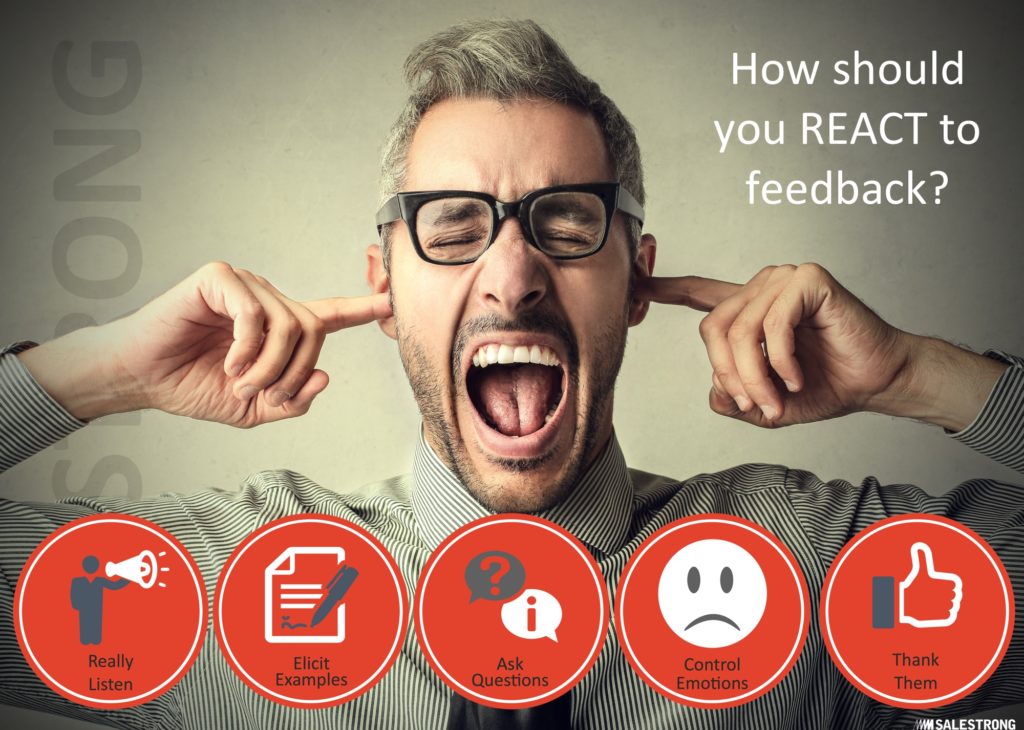Sales people perform far better if they are capable of controlling feedback emotions. If they can take on board and learn from feedback from those around them they will be able to continually improve and adapt to change. But we know that sales people do not like receiving feedback. From a recent poll of 110 sales people, when asked how they feel about receiving feedback from their sales managers, this is what they said:
REACT To Feedback
Sales people do not welcome feedback because they react badly to it. This is often because they are not actually good at controlling feedback emotions. To help sales people to learn to use feedback more successfully, Salestrong have developed the REACT to Feedback model which is designed to help improve the way feedback is received. It stands for:
• Really listen
• Elicit examples
• Ask questions
• Control your emotions
• Thank them sincerely
Of all of these capabilities, controling emotions is one of the toughest to do. When someone is feeding back to you, the lymbic brain leaps into action and wants to respond defesively. In other words your chimp is out! According to Daniel Khaneman, “The animal brain is the elephant and we are the driver, but we all know who is stronger and so who is in charge!”
To help with controlling feedback emotions when coaching sales people, Salestrong have developed the DARE Model.
DARE
DARE is an easy way to describe the predictable pattern of emotional responses that sales people experience when receiving feedback. DARE stands for:
• D – disbelief
• A – anxiety or anger
• R – rejection or rationalisation
• E – embrace the feedback
When sales people receive feedback they go through the following phases:
• Disbelief: a level of surprise or even shock that the feedback has been given.
• Anger/anxiety: this is especially the case when caught off-guard, the sales person might experience a level of frustration, discomfort or concern regarding what the feedback might mean.
• Rejection/rationalisation: In an attempt to reconcile the feedback with what they believed should have actually happened, the sales person might attempt to “explain away” the feedback. This is where the sales people often search for excuses or “reasons why” the events happened in the way that they did. They often search for information that shows them in the best possible light, and aligns with their strong self-image and optimism bias.
• Embracing: after a period of time the sales people reach the stage where they can take on board the feedback, use the feedback and move on.
Let It Go!
We encourage sales people to recognize that these emotional reactions are predictable and normal when receiving feedback. Our sales coaches help them to see that some sales people can go through this process more quickly than others. The aim is to help them move through the DARE process as speedily as they can. We’re aiming to avoid them getting stuck in the disbelief and anger satges which can lead to rejection of the feedback, and a failure to learn and improve.
Conclusion
Using the REACT to feedback model as an effective way to improve feedback reception and for sales people to learn and benefit from their experiencesack. Using the DARE model works within this to help sales people to start controlling their feedback emotions. This is done by moving through the emotional elements of feedback more quickly.



